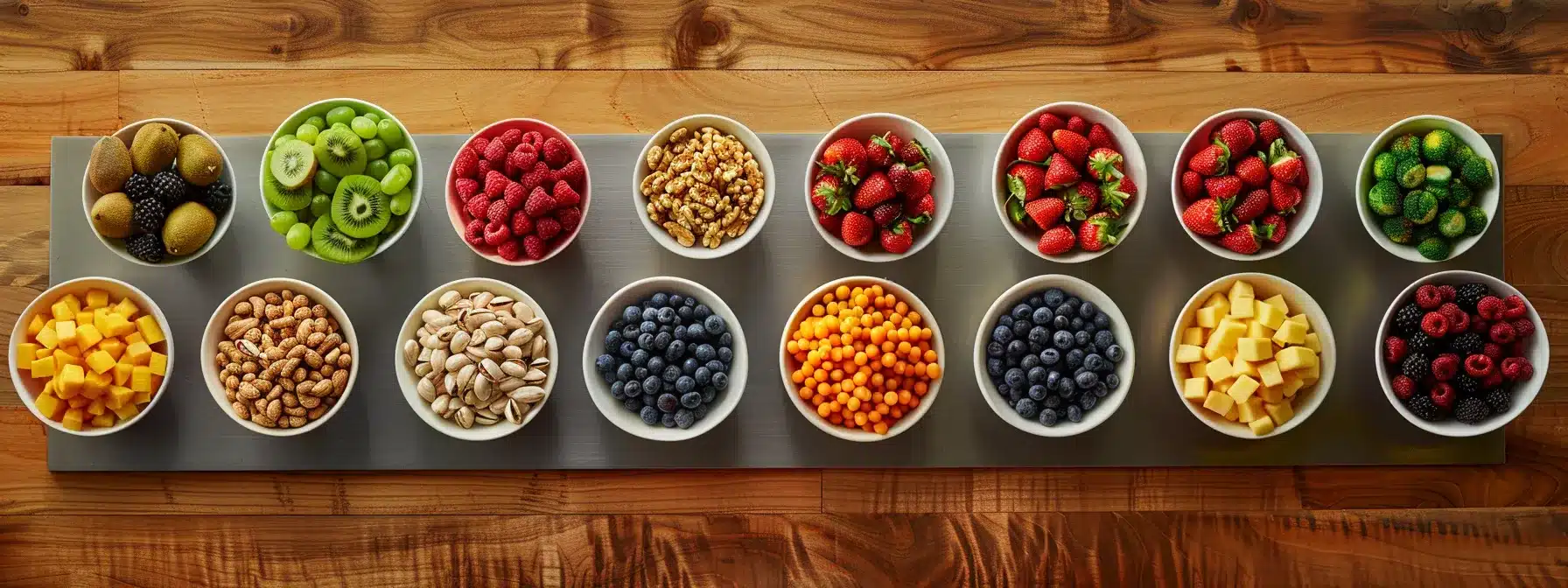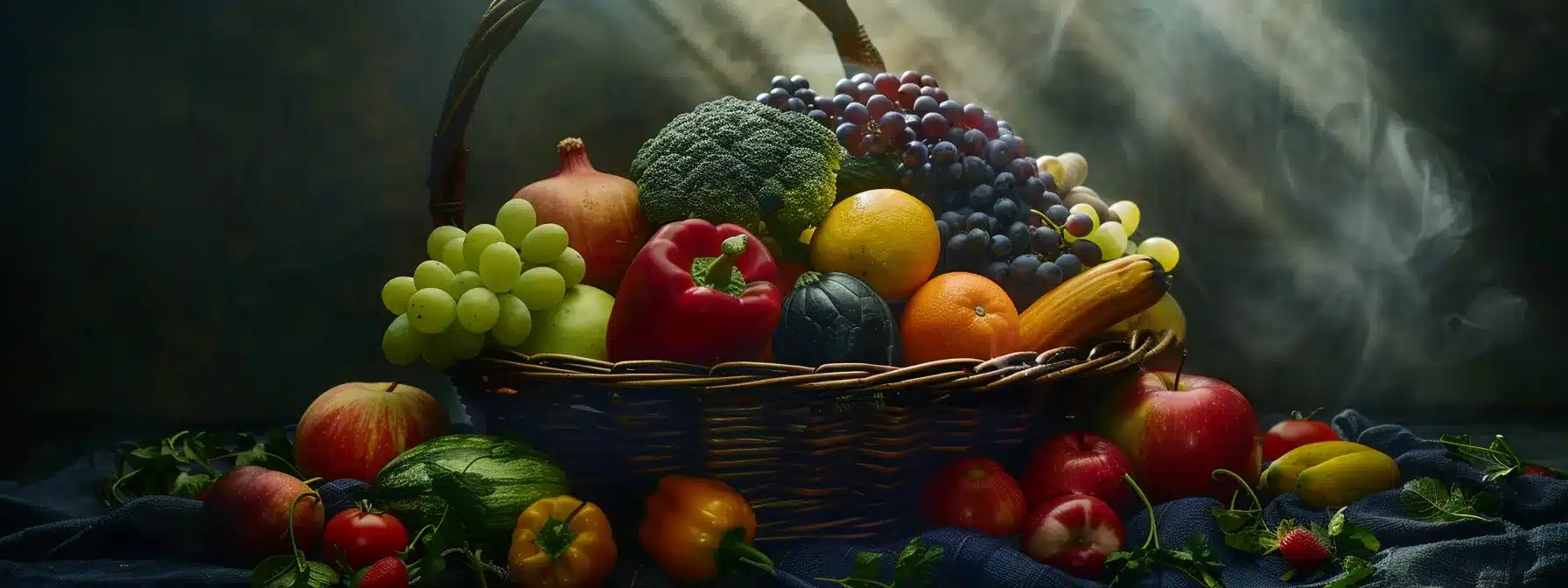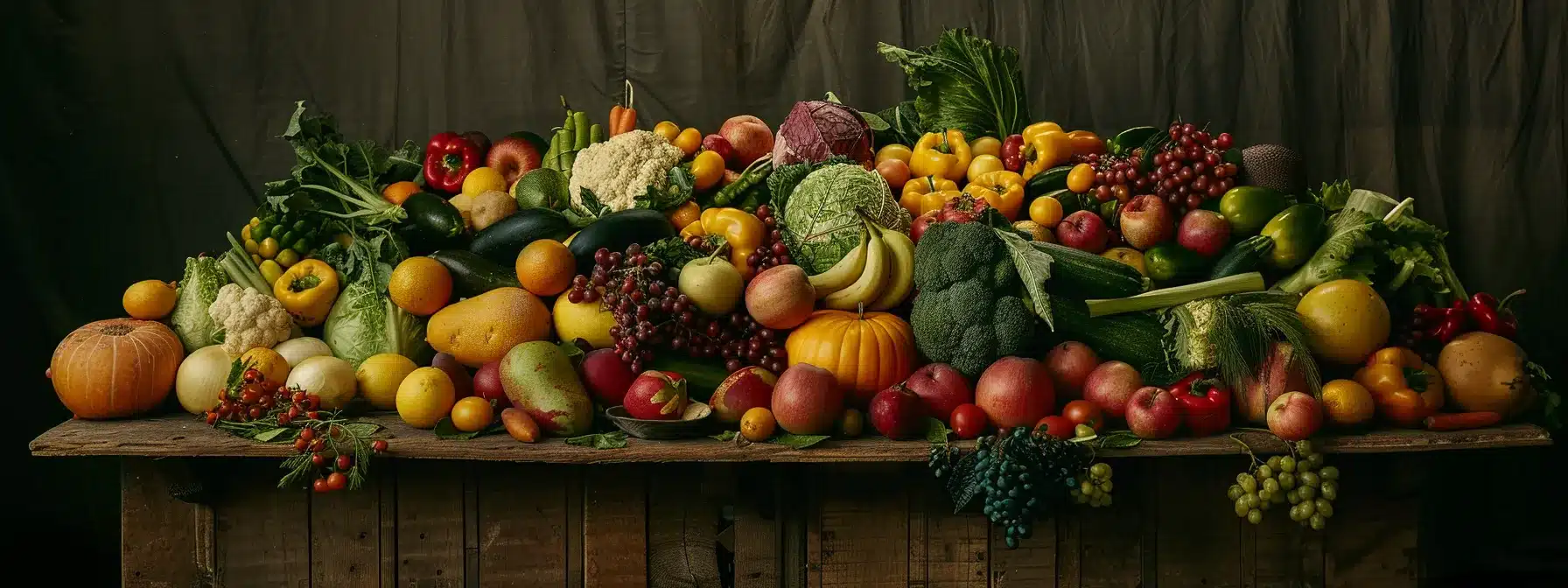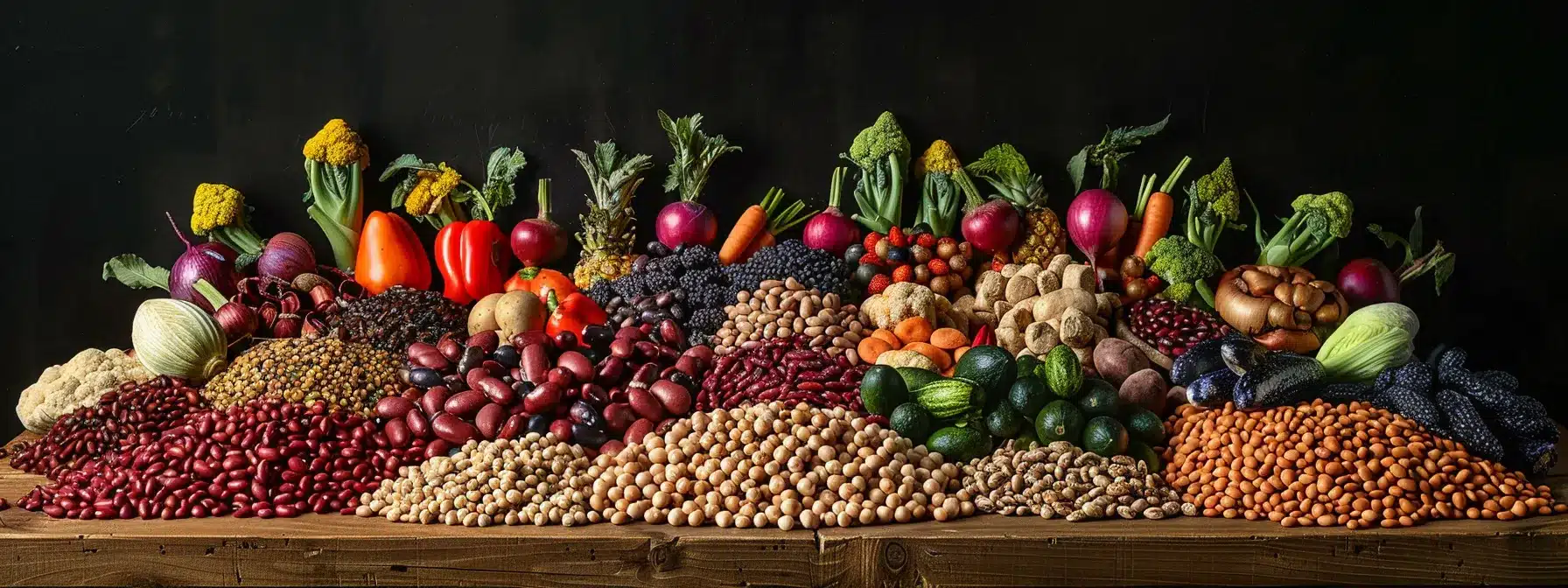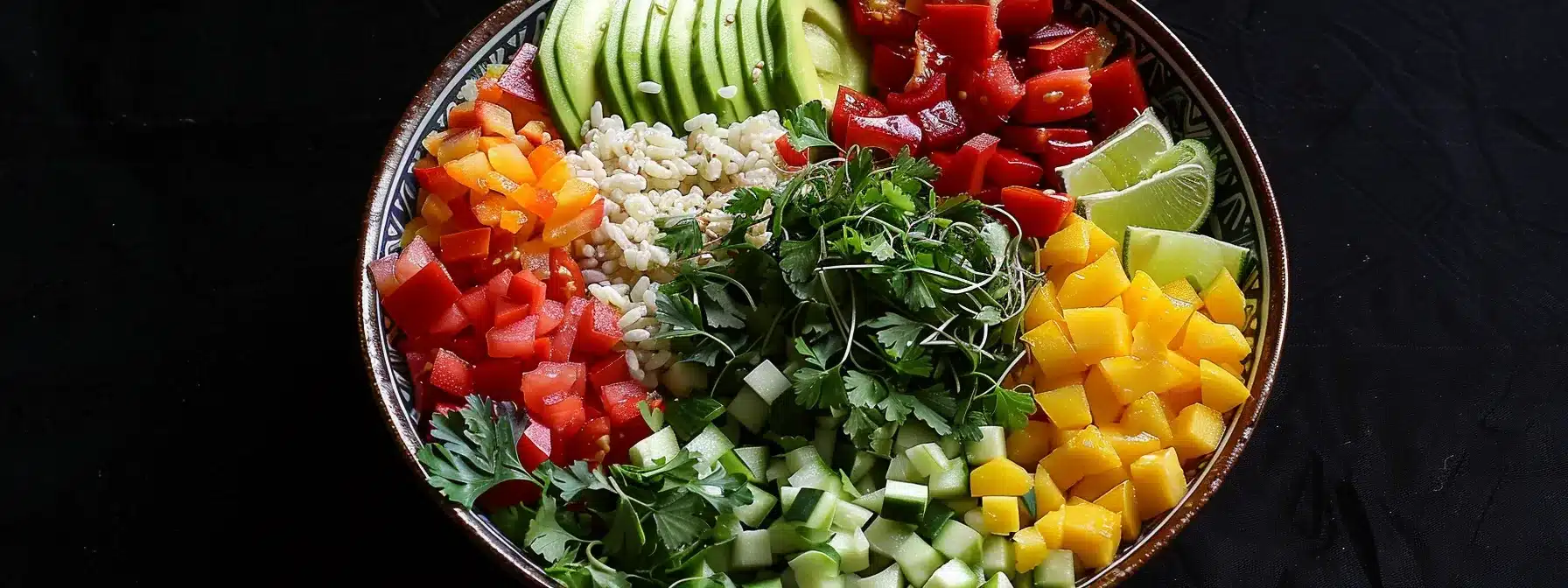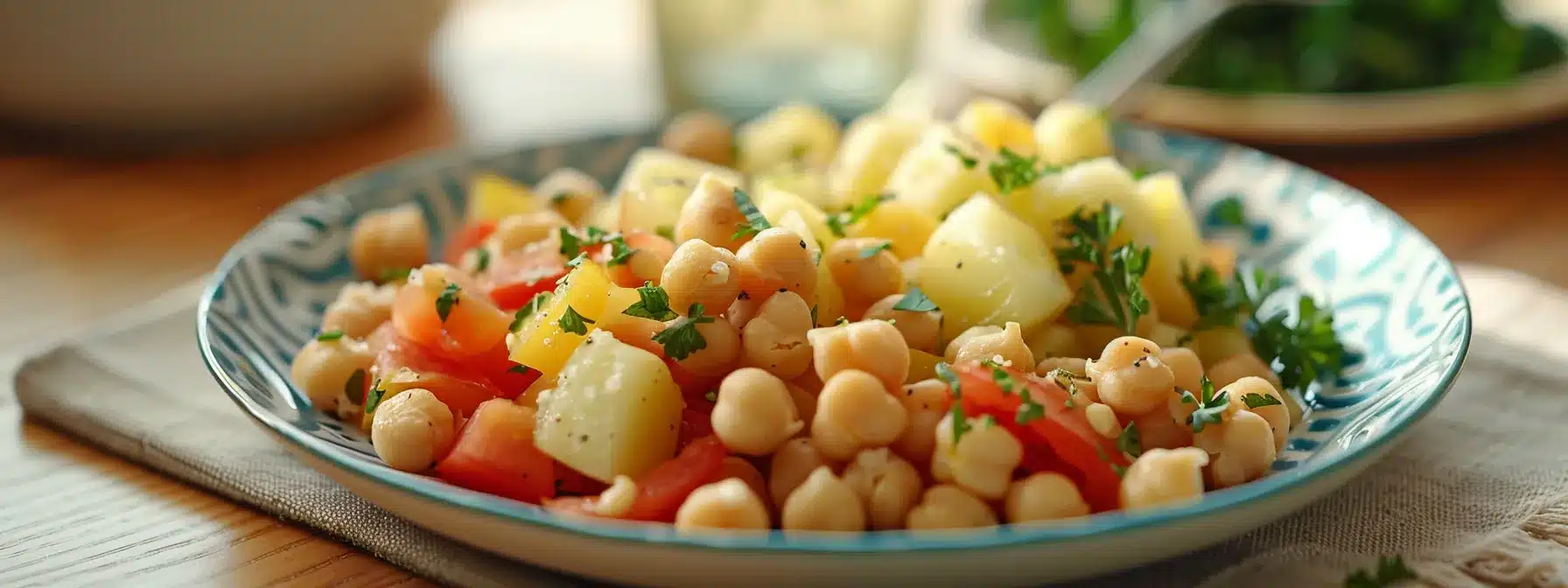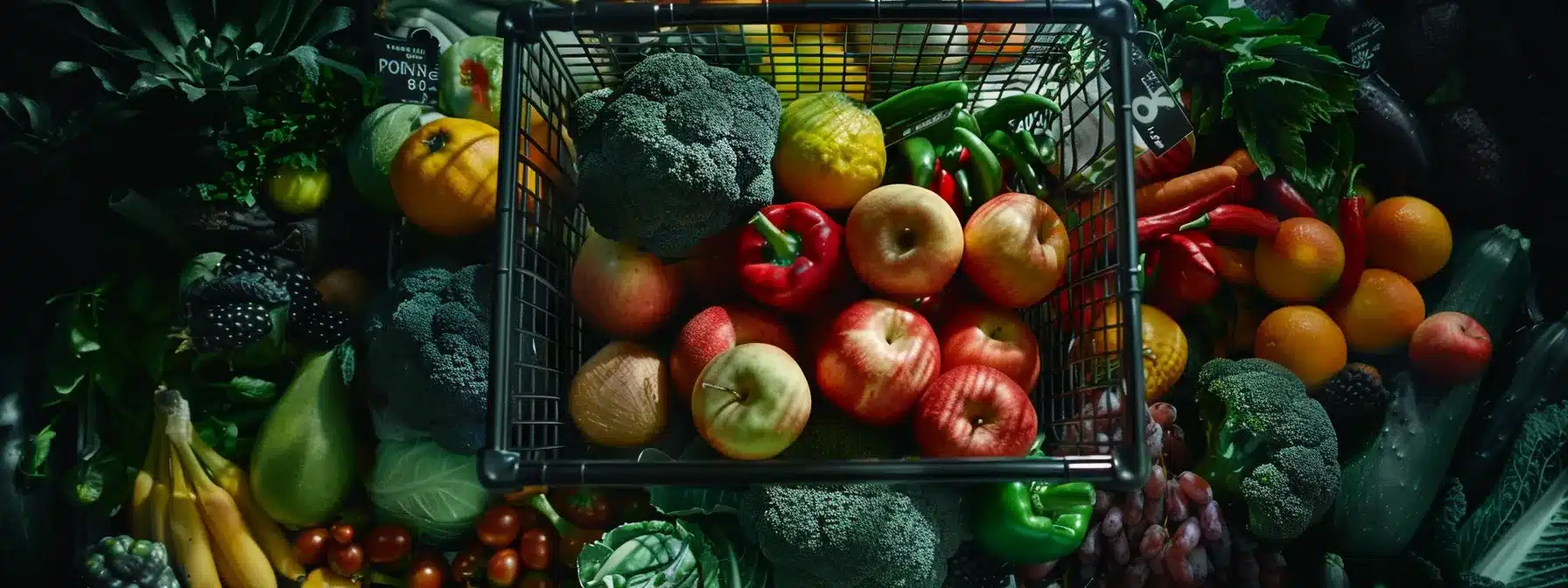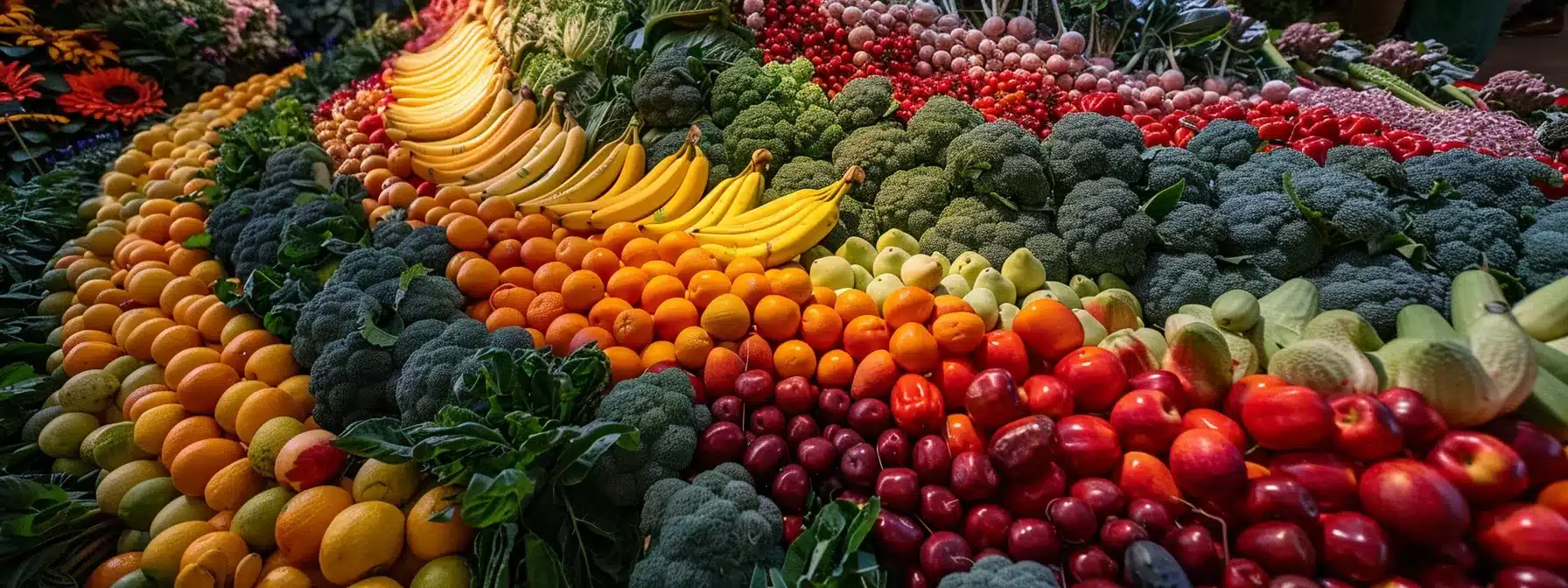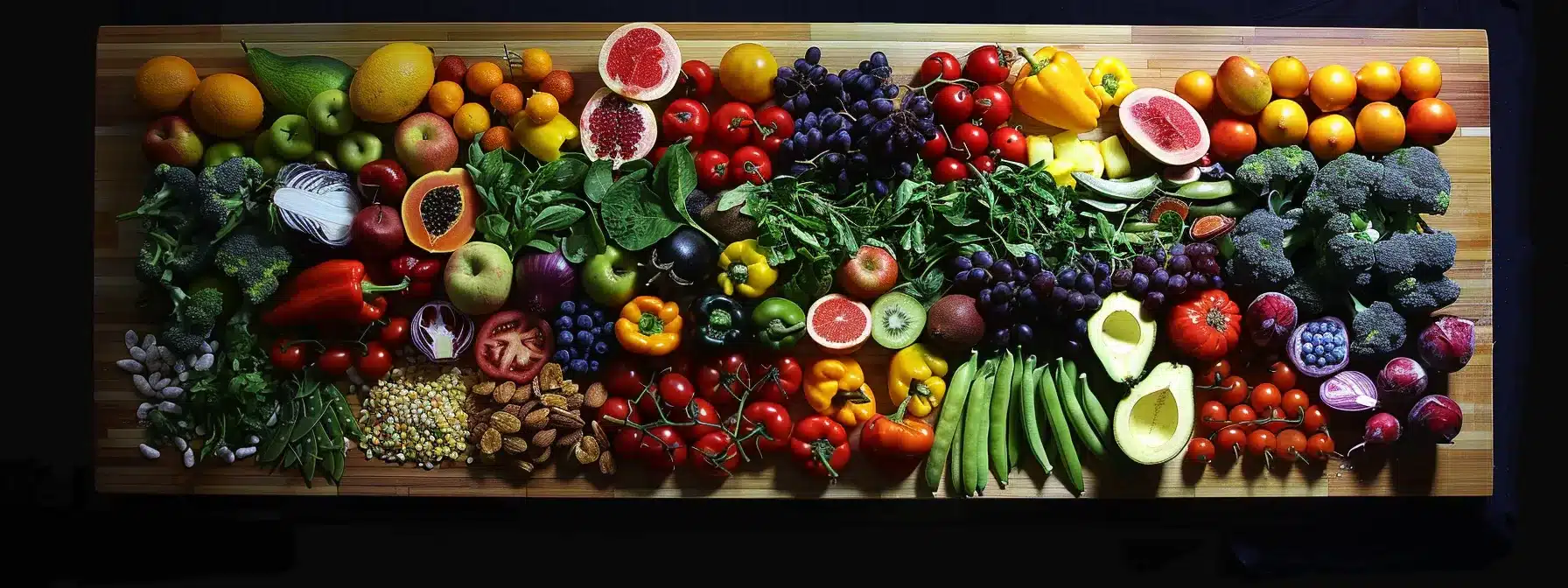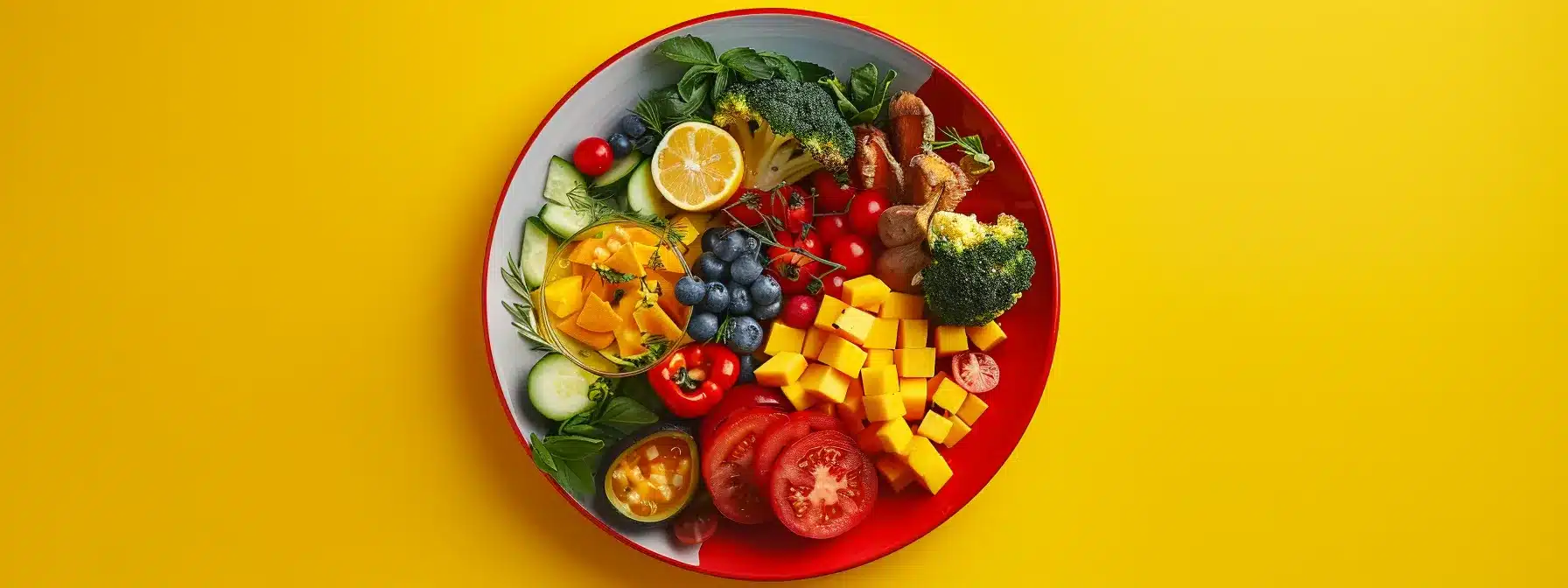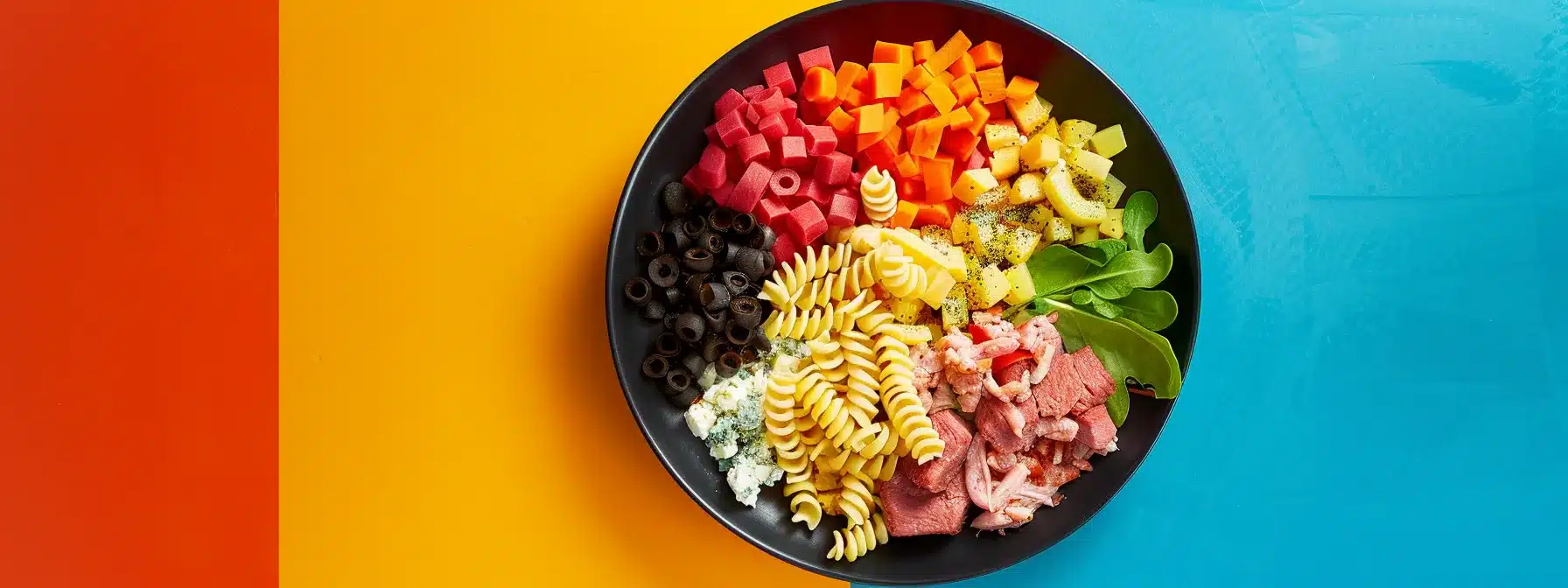Struggling to find the time for nutritious eating? You’re not alone. Our fast-paced lives often send healthful eating to the back burner, but it doesn’t have to be that way. This article will arm you with a collection of healthy snack recipes designed for busy individuals. From a tablespoon of energy-boosting almond butter to a quick, immune system-friendly trail mix that fits snugly into your laptop bag, we’ll cover portable and desk-friendly options. Plus, we’ll include dairy delights like protein-packed cheese cubes for sustenance on the move or for powering through your post-workout window. Discover how to refuel efficiently without sacrificing health or taste – your body will thank you for it.
Quick Energy Boosting Snacks for Busy Mornings

Mornings can be hectic, but fuelling your body with the right nutrients doesn’t have to be a time-consuming task. Offering practical and nutritious solutions, this section dives into quick and satisfying snacks that energize your busy day. Whip up Overnight Oats with the sweetness of fresh fruits, or assemble a creamy Yogurt Parfait sprinkled with crunchy granola. For those on the go, grab a Nut Butter and Banana Wrap, take a sip of a Green Smoothie bursting with nutrients, or enjoy a slice of Whole Grain Toast topped with creamy avocado. Each of these options incorporates ingredients like nut butter and lemon for zest, while some utilize quick bread or transform into a pudding-like consistency for variety. Dive into these effortlessly wholesome options to power through your morning with zest.
Prepare Overnight Oats With Fresh Fruits
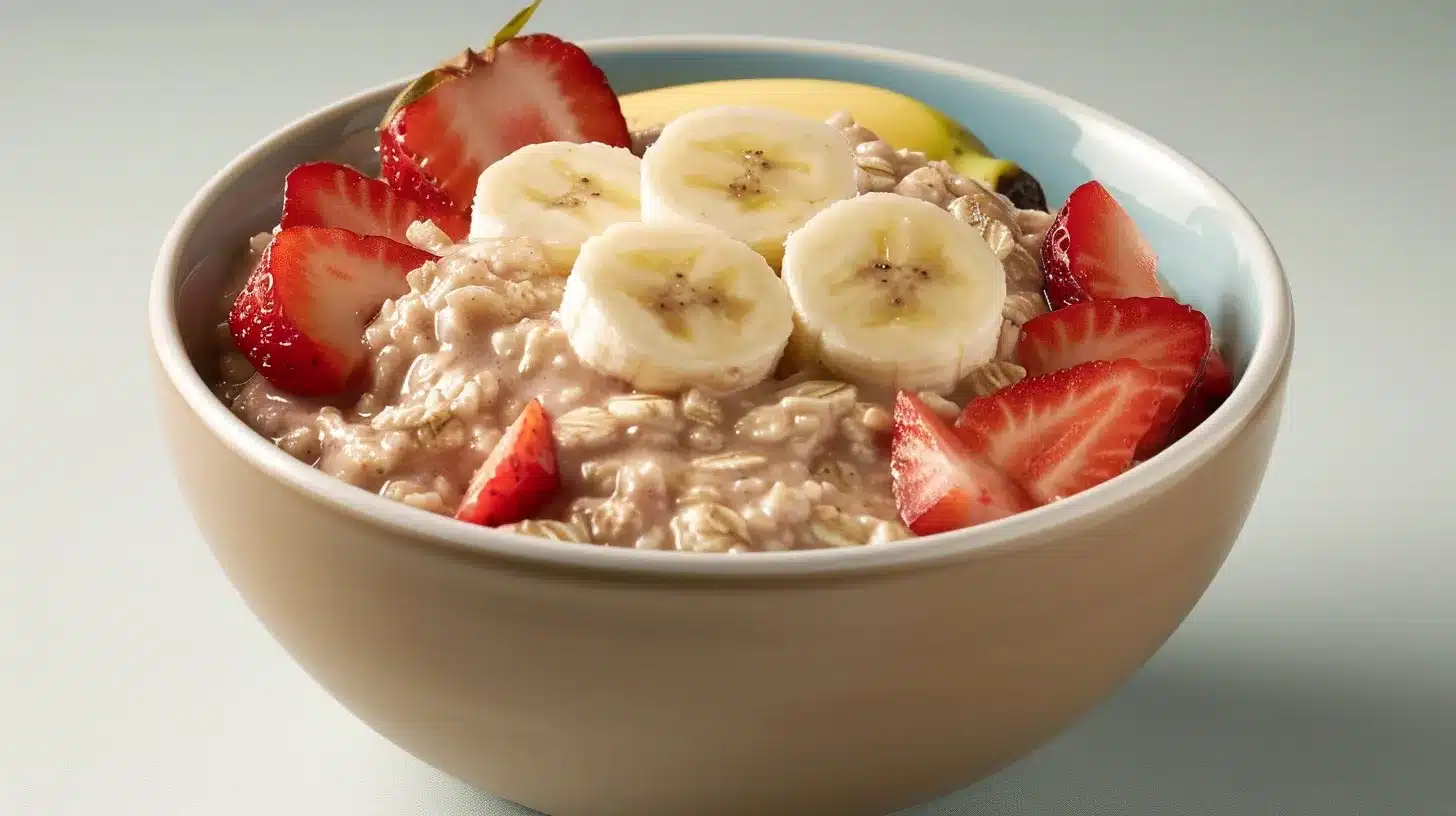
In the quest for a morning snack that balances convenience with nutrition, overnight oats with fresh fruits stand out as a powerhouse. The simple preparation involves soaking oats in your liquid of choice, typically milk or a non-dairy alternative, which by morning transforms to a creamy base reminiscent of a soft pudding. Top this with sliced bananas for a quick energy source or add antioxidant-rich berries for a tangy kick. Integrating nuts like pistachios can add a satisfying crunch as well as essential fatty acids, making this dish a well-rounded start to any day.
For those looking for a hint of indulgence without the guilt, consider sprinkling a few chocolate chips into your overnight oats. The subtle sweetness pairs delightfully with the natural umami essence of the oats. This snack doesn’t just satiate morning cravings but also contributes to sustained energy levels, thanks to the fibrous whole grains. Personalize your bowl with additional toppings like a dollop of yogurt or a spread of nut butter atop a whole-grain bagel alongside your oats for an extra boost of protein, rounding off a breakfast that is both nutritious and efficient for busy bodies.
Assemble Yogu
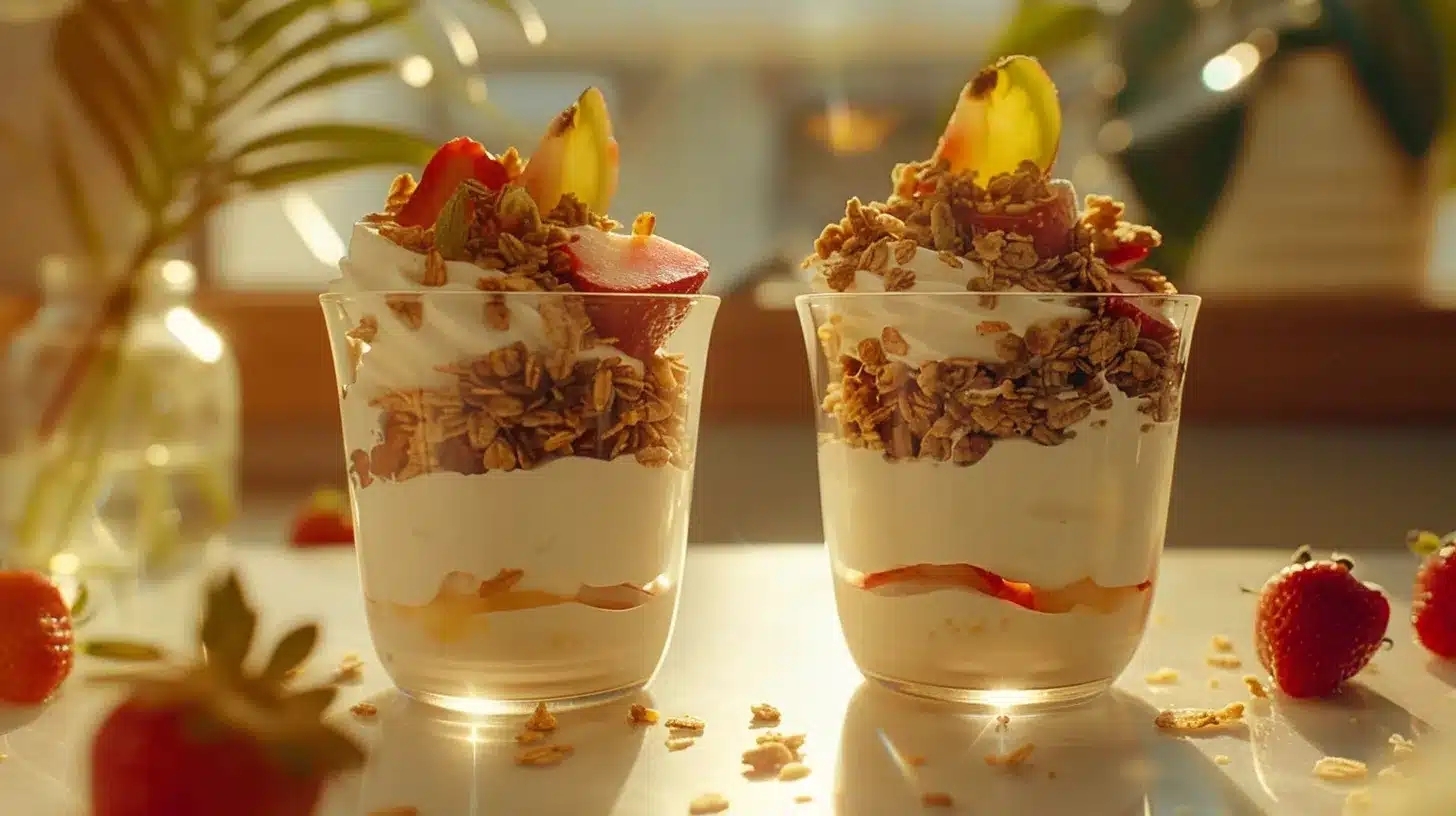
Starting the day with a Yogurt Parfait topped with granola is not only a testament to efficiency but also to health and taste. A simple layering of creamy yogurt, a sprinkle of oats, and a medley of fruits such as juicy pineapple pieces can offer a sweet and tangy flavor that invigorates your morning. Add a drizzle of orange juice for a citrusy zest and a scattering of toasted bread crumbs for an unexpected yet satisfying texture, making this snack a quick and wholesome option for those with a fast-paced lifestyle.
For an added twist, try incorporating caramelized onion bits with a teaspoon of honey into your granola mix. This combination introduces a savory edge to the typically sweet parfait, complementing the freshness of the pineapple and the tang of the orange juice. The bold flavors packed in this snack offer not only sustained energy but also a harmonious balance of taste, ensuring that you can face the challenges of the day with a nourished body and a delighted palate.
Create Nut Butter and Banana Wraps
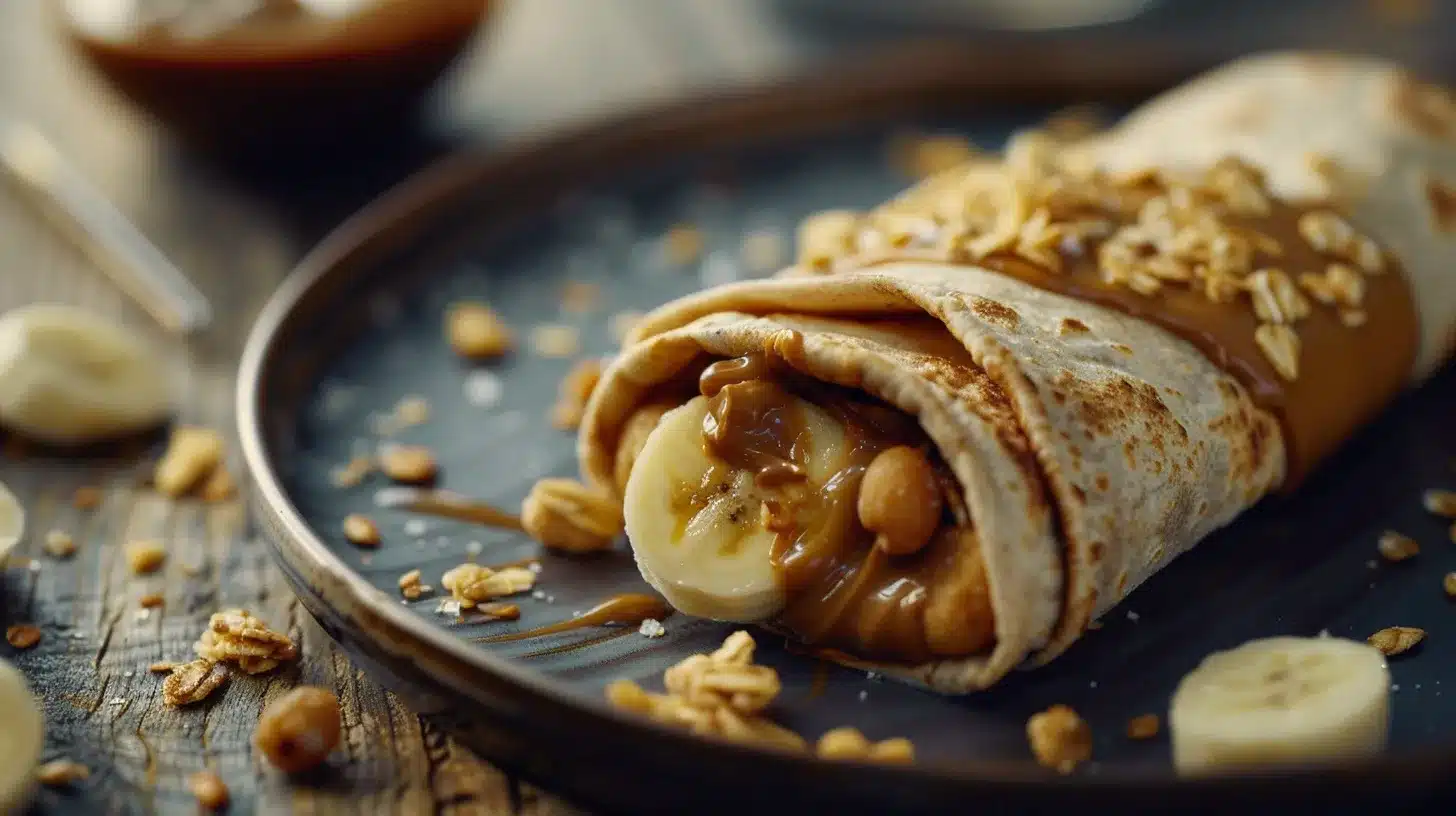
Nut Butter and Banana Wraps offer a swift solution to morning hunger with a hit of protein and natural sugars that set the tone for a dynamic day. By spreading a generous layer of creamy peanut or almond butter on a whole-grain wrap and placing a whole banana inside, individuals create a hand-held breakfast loaded with nutrients. Adding a sprinkle of dill can elevate the flavor profile, providing a surprising herby note to the simple yet filling concoction.
For a hint of sweetness and hydration, one might blend a splash of orange juice with a little milk to create a thin, pourable sauce—a delightful accompaniment drizzled over the wrap. It’s a smart way to add a dose of vitamin C and calcium to the meal without adding unnecessary complexity to the morning rush. This nimble snack, rich in fiber from both the wrap and banana, efficiently sustains energy and satisfies those who seek a practical start to their busy mornings.
Blend Green Smoothies Packed With Nutrients
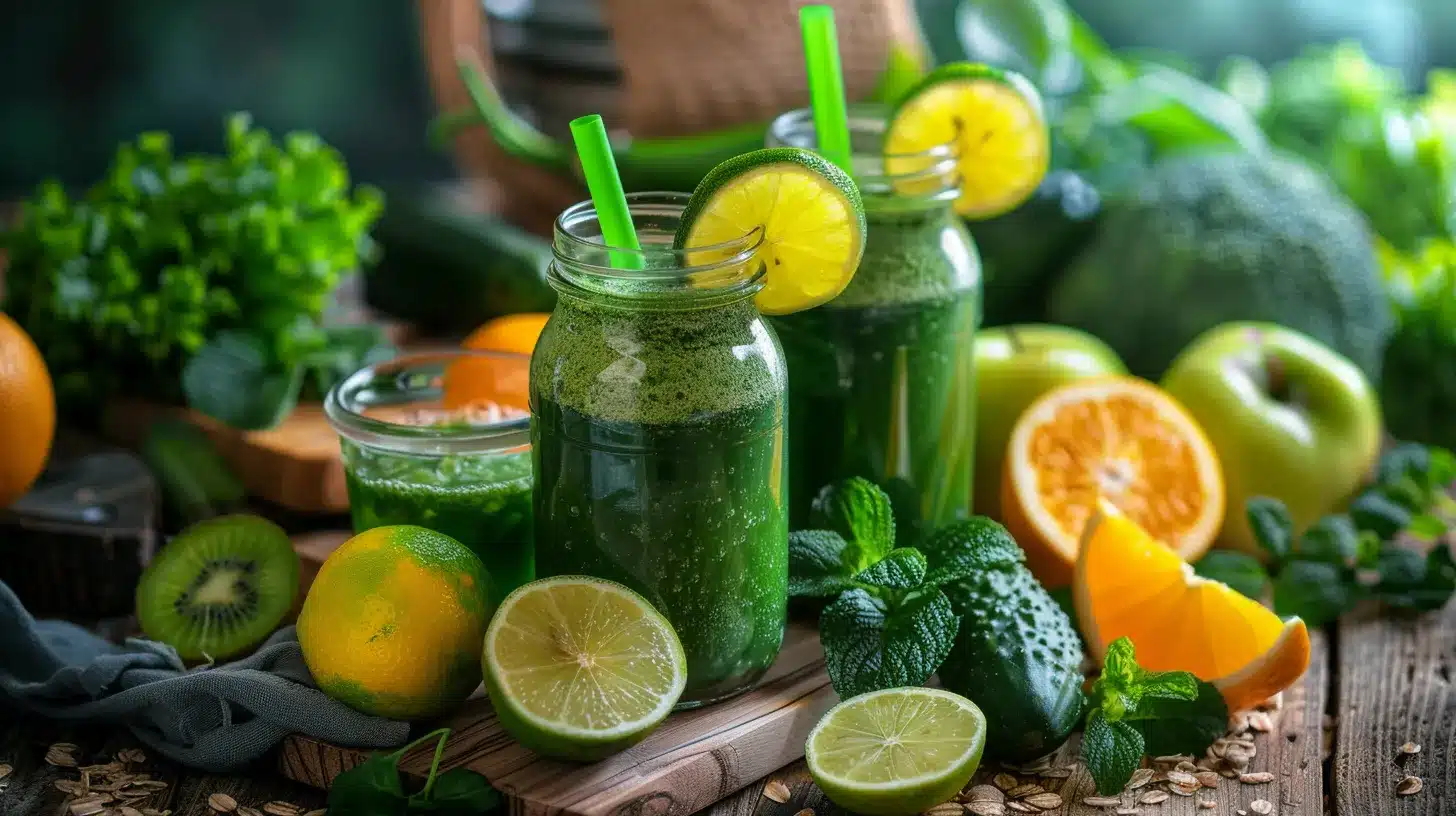
Green smoothies stand as a beacon of health for those seeking nutrient-dense options amidst a busy morning. Incorporating a daring hint of jalapeño offers a burst of flavor and metabolism-boosting properties, while a handful of nuts lends a satisfying creaminess, contributing both protein and healthy fats. Tossing in a variety of berries brings a delightful sweetness and a significant dose of antioxidants, making this smoothie a robust, health-promoting companion for anyone’s day start.
Combining greens with dark chocolate shavings might seem unconventional, yet it offers a unique blend of taste and health benefits. The chocolate not only indulges the taste buds with its rich profile but also adds heart-healthy flavonoids to the mix. As a quick-to-make drink, these smoothies provide busy individuals with a manageable yet powerful way to incorporate essential nutrients into their diet, crafting a delicious and invigorating morning ritual that supports their well-being.
Make Whole Grain Toast With Avocado Slices

Starting the day with Whole Grain Toast topped with fresh avocado slices is a smart choice for those looking to maintain a healthy diet on a tight schedule. The rich fiber content in the grain and the good fats from the avocado contribute to lasting satiety and provide the energy needed to tackle a demanding day. To add a hint of excitement, a slight sprinkling of spice, such as a pinch of crushed red pepper flakes, can awaken the taste buds and add a delicious complexity to this simple dish.
Incorporating elements like spinach and strawberry into the mix not only enhances the nutrient profile but also brings a balance of sweet and savory flavors to the meal. Tucking a few baby spinach leaves beneath the avocado layer adds a boost of iron and vitamins, while a couple of sliced strawberries lend a naturally sweet contrast, resulting in a wholesome and flavorful snack that aligns seamlessly with an active lifestyle.
Portable Snacks for on-the-Go Professionals
For professionals who live life on the move, portable snacks are the secret weapons of nutrition. Trail mixes with a variety of nuts and dried fruits fulfill the need for a quick energy burst and vital calcium intake. Homemade energy bars, tailored to individual tastes, can become the ideal mid-morning pick-me-up. Crisp, pre-cut veggies with hummus cups serve as a refreshing source of nutrients, ready for dipping. Hard-boiled eggs pack a protein punch, perfect for sustained energy, while single-serve cheese and whole grain crackers offer a satisfying snack packed with whole grains and more calcium. These easy-to-carry options ensure that even the busiest schedules have room for healthy eating.
Pack Trail Mixes With Nuts and Dried Fruits
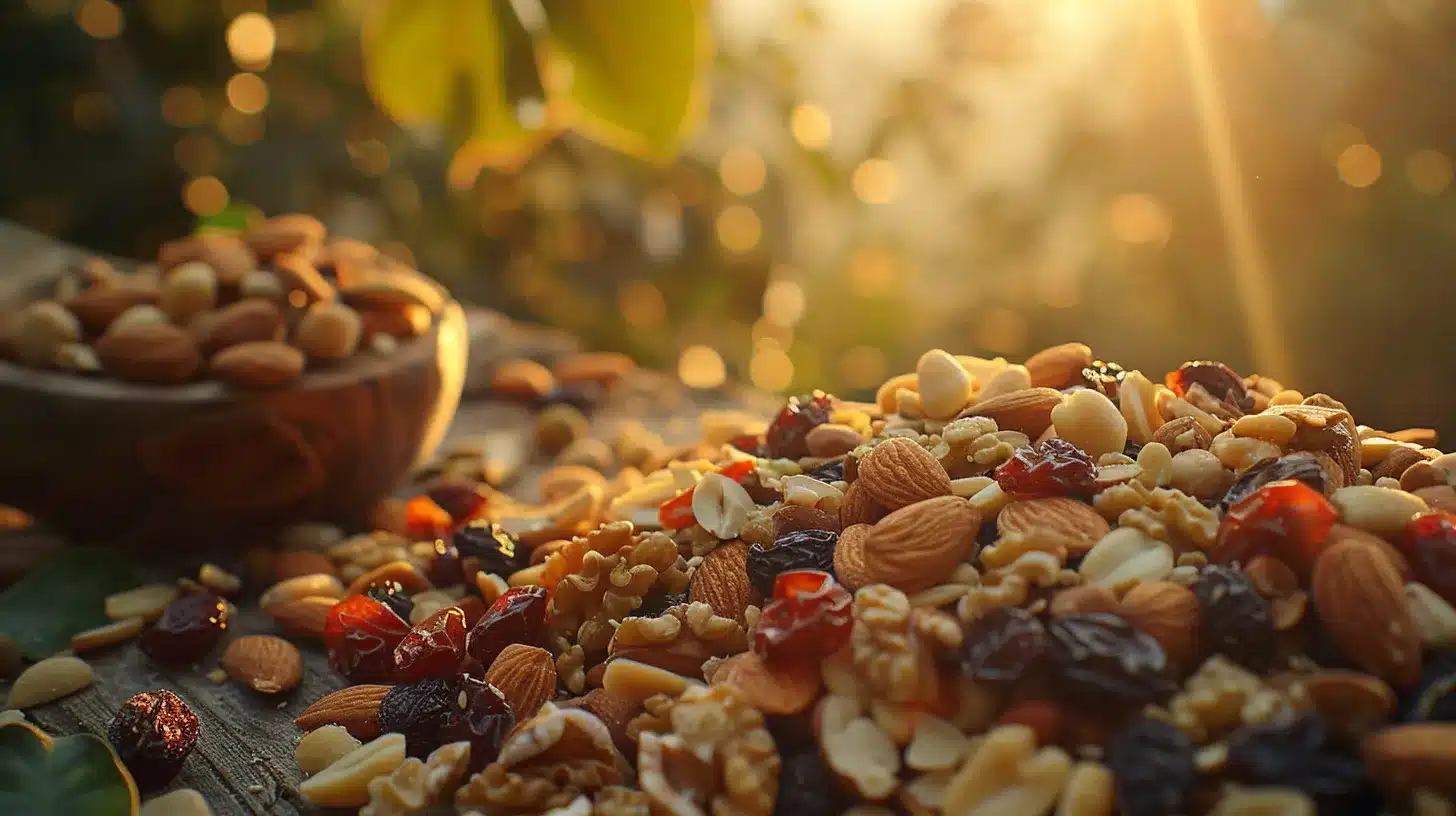
Trail mixes combine the energy-boosting benefits of nuts and the natural sweetness of dried fruits, making them ideal for professionals seeking a convenient snack. Adding unique ingredients like baked sweet potato chunks and tangy mandarin orange pieces can offer a twist to the classic mix, providing substantial B vitamins and a zesty flavor profile. This creates a snack that not only satisfies hunger but also supports overall health and vitality throughout a busy day.
Preparing a personal trail mix allows for customization to individual dietary needs, including the consideration of salt intake. Sprinkling a light dusting of sea salt on the mix can enhance the natural flavors of the nuts and fruits, offering a satisfying balance of sweet and savory without overwhelming the palate. Such thoughtfully crafted snacks ensure that energy levels are maintained, and nutritional goals are met, even for those with the most demanding of schedules.
Prepare Homemade Energy Bars
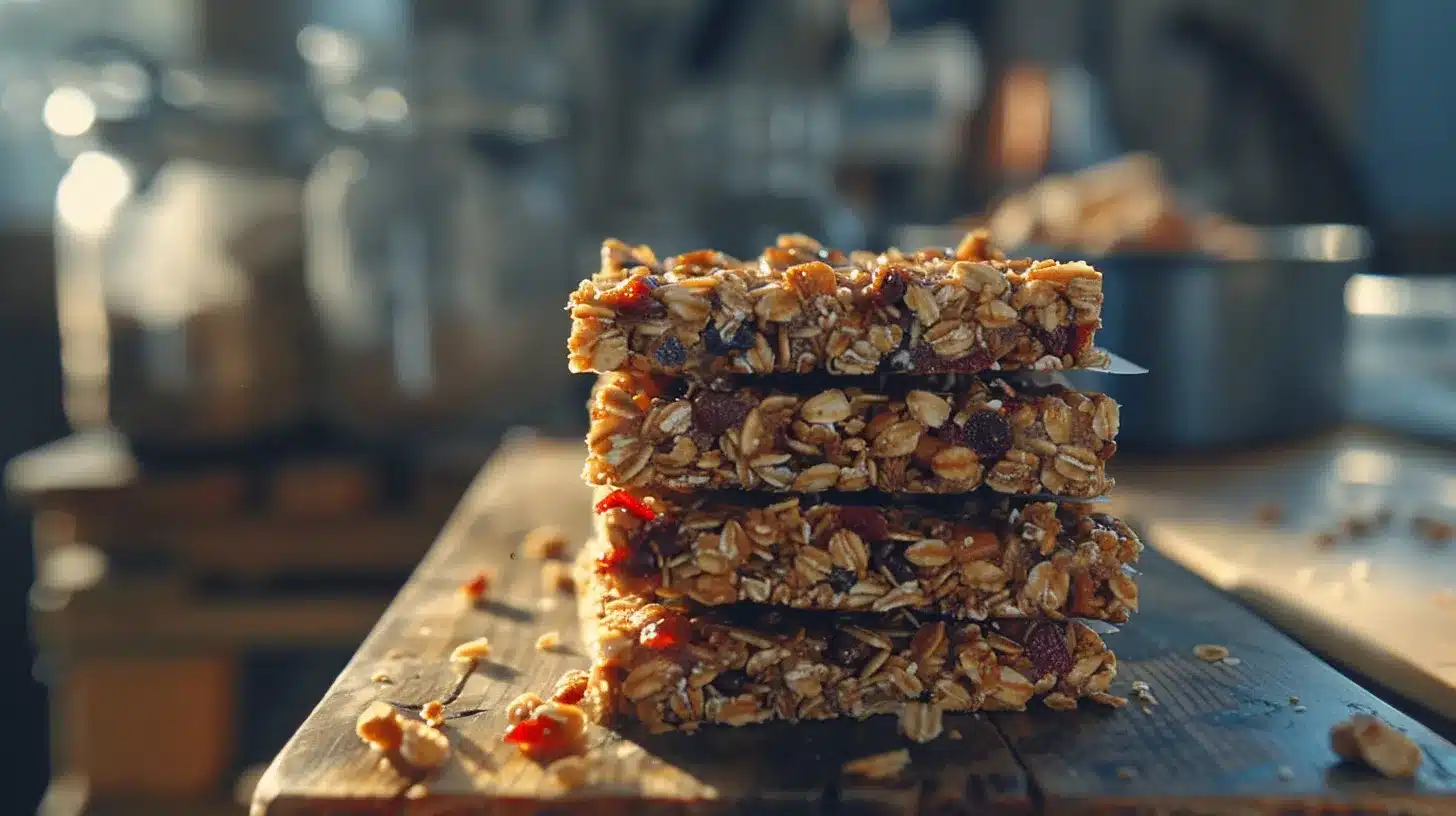
Homemade energy bars are a strategic choice for those targeting weight loss or just needing a nutritious addition to their lunchbox. A quick recipe might blend oats with natural sweeteners and a zest of lime, creating a snack that’s both flavorful and supportive of weight management goals. By avoiding the high sugar content often found in commercial bars, these homemade versions serve as a healthy, cake-like treat that doesn’t sacrifice taste for nutritional value.
Effectively customizable, homemade energy bars allow individuals to include ingredients such as nuts, seeds, and dried fruits to meet their personal dietary needs. These bars can easily be crafted over the weekend, creating a batch ready to go for the week ahead. Not only do they provide sustained energy, but they’re also a pragmatic option for busy professionals who need a quick snack that contributes to their overall health and fits seamlessly into a packed day.
Include Pre-Cut Veggies With Hummus Cups

Pre-cut veggies paired with hummus cups offer busy professionals a snack that’s not only easy to transport but also rich in nutrients like potassium, essential for maintaining heart and muscle function. Swapping out the traditional chips for versatile veggies such as bell peppers or carrots turns the classic nacho snack into a healthful treat. The creamy hummus, perhaps accented with a hint of coconut, provides a savory complement that is both satisfying and beneficial for digestion.
For a twist on the conventional, incorporating cottage cheese with herbs into the hummus blend can give a protein-packed boost to the palate. This snack is invaluable for those juggling a busy schedule, providing a quick source of energy and sustenance without resorting to less wholesome alternatives. The convenience of this snack, paired with its nutritional profile, makes it a smart choice for health-conscious individuals on the move.
Carry Hard-Boiled Eggs for a Protein Punch

Carrying hard-boiled eggs as a snack is a brilliant way to ensure you’re getting both a protein punch and essential minerals like iron without the added sugar found in many on-the-go options. They’re a convenient choice for health-conscious professionals looking to avoid the mid-morning slump or an energy dip in the afternoon. These self-contained, nutrient-dense snacks are akin to natures’ own dessert, sweet in their simplicity and wholesomeness.
The versatility of eggs makes them an ideal, no-fuss snack for those with demanding schedules. Eggs provide a high-quality protein source, which assists in muscle repair and growth, making them a critical component for fitness enthusiasts and busy professionals alike. Unlike many snacks that are high in empty calories, an egg is a compact package of nutrition, supporting a balanced diet free from unwanted additives.
Grab Single-Serve Cheese and Whole Grain Crackers

For professionals with scant time to spare, single-serve cheese paired with whole grain crackers is a smart snack choice. The combination brings together the satisfying crunch of the crackers with the creamy richness of cheese, offering a flavor profile reminiscent of a comforting carrot cake without the hassle of baking. This duo, providing both fiber and protein, not only staves off hunger but supports a balanced diet, fueling your busy day ahead.
Through the clever pairing of nuanced flavors, such as a hint of maple infused into the cheese or a banana-flavored whole grain cracker, one can relish a snack that echoes the delight of cereal or a festive turkey dinner in miniature form. By choosing this portable yet wholesome option, busy individuals can navigate their bustling schedule with ease, ensuring they remain nourished and energized without sacrificing taste or quality.
Efficient Meal Prep Snacks for the Week
Successful meal prepping for the week requires snacks that are not only healthy but also convenient and delicious. Introducing a lineup of mouthwatering options, we start with Mini Quiches packed with veggies, which are perfect for a low glycemic index choice. Indulge in Homemade Muffins blending oats and berries for a fiber-rich treat, or opt for Chia Seed Puddings in portable jars. For a crunchy alternative, Baked Sweet Potato Chips serve as a low-calorie snack, while Snack Boxes assembled with a variety of ingredients including peanut, rice, and more offer easy-to-grab selections. Each recipe is crafted to simplify your week while fueling your body efficiently.
Batch Cook Mini Quiches With Veggies

Mini quiches brimming with colorful vegetables present an ideal meal prep option for those seeking balanced carbohydrates and proteins in one bite-sized package. These convenient treats, often low in sodium and rich in nutrients, can be customized with a variety of fillings, including spinach for its iron content or tomatoes for vitamin C. With the inclusion of eggs, each mini quiche becomes a protein-packed gem that’s perfect for those conscious of maintaining steady energy levels without forgoing taste or nutritional value.
Particularly for individuals who favor the healthful fats found in ingredients like peanut butter and chia seeds, incorporating these into the quiche’s recipe adds both texture and functional benefits. Oat flour can be used as a wholesome base for creating a nutritious crust, enhancing the fiber content while keeping each quiche satisfyingly filling. By batch cooking these tempting snacks, one sets the stage for a week where convenience does not compromise on the body’s complex needs.
Bake Healthy Muffins With Oats and Berries

Baking healthy muffins infused with oats and berries is a delicious strategy for meal prepping. Swap your traditional flour with almond flour for added protein and a subtly sweet flavor, and for a delightfully unique twist, mix in a hint of chipotle for a smoky note. These muffins, studded with fresh or frozen berries, offer a quick, fiber-rich snack perfect for those needing nourishment on tight schedules.
Enhance the nutritional value of your homemade muffins by incorporating tahini, a sesame seed paste rich in minerals. For added crunch and variety, sprinkle a handful of homemade granola atop each muffin before baking. This simple addition enriches the texture and taste, providing a portable and satisfying snack option designed to support busy lifestyles with sustained energy.
Prepare Chia Seed Puddings in Jars

Chia seed puddings are an excellent choice for meal prep, providing a nutritious and versatile snack option. Combining chia seeds with liquid such as almond milk and a bit of vanilla extract, you can create a thick, pudding-like consistency that’s both satisfying and beneficial for maintaining weight. For a touch of flavor, mix in a dash of sea salt or stir through a spoonful of coffee for a caffeine-infused variation.
To serve, simply spoon the mixture into jars and refrigerate overnight, allowing the chia seeds to fully expand, resulting in a gelatinous and rich texture. Before sealing the jars, top with ingredients like fresh fruit or a drizzle of honey for added natural sweetness. This grab-and-go snack is not only packed with fiber and omega-3 fatty acids but can also be tailor-made to cater to individual tastes—whether that’s adding a sprinkle of cacao for chocolate lovers or pairing with a savory component like cheese for those who prefer a twist on the classic quesadilla.
Make Baked Sweet Potato Chips

Baked sweet potato chips serve as a guilt-free snack for anyone with a busy schedule seeking a crispy indulgence without the added oils of conventional chips. When batched on the weekend, these snacks boast a prep-friendly, health-conscious alternative, easily spiced up with crushed kale for added nutrients or sprinkled with a light dusting of yogurt powder to give a tangy twist. Not only do these chips cater to cravings, but they also provide a valuable source of vitamin A and fiber, supporting overall well-being throughout a hectic week.
To augment the rich, sweet flavor of sweet potato chips, consider adding chopped walnuts for a satisfying crunch and cranberries for a touch of tartness. This combination not only enhances the taste experience but also injects an extra dose of antioxidants and omega-3 fatty acids into the diet. By turning to these hearty chips as a go-to snack, busy individuals can enjoy a nutritious, portable option that aligns with a waffle-free commitment to sensible eating and vibrant health.
Assemble Snack Boxes With a Variety of Options
Assembling snack boxes brimming with a variety of options like crunchy zucchini sticks, which are excellent for digestion, and air-popped popcorn dusted with a hint of sea salt and olive oil, creates an array of flavors and textures for the palate. These snack boxes cater to busy individuals who desire convenience without compromising on the health benefits and taste of their food, providing an efficient grab-and-go solution for sustaining energy throughout the day.
Including a touch of sweetness, such as a vanilla-infused nut mix, can complement savory options and satisfy a range of tastes. Crafting these personalized snack boxes with care not only supports a busy lifestyle but also promotes mindful eating by offering nutritionally balanced bites that can be enjoyed between meetings or while on the move, making them indispensable for maintaining a healthy diet amidst a packed schedule.
Healthy Snacks to Keep at Your Desk
Transforming your desk into a treasure trove of healthy snacks ensures you’re prepared for any craving while managing your weight and energy levels. Roasted chickpeas offer a crunchy alternative to traditional trail mix, while a jar of nut butter paired with whole grain crackers provides lasting fullness with just the right touch of sweetness. For those who favor a salty snack, dried seaweed packs are a go-to, and unsweetened applesauce cups deliver a wholesome fruit fix. And when the longing for something sweet strikes, dark chocolate squares enriched with coconut oil and a hint of cherry satisfy without derailing your nutritious goals.
Store Roasted Chickpeas for Crunchiness
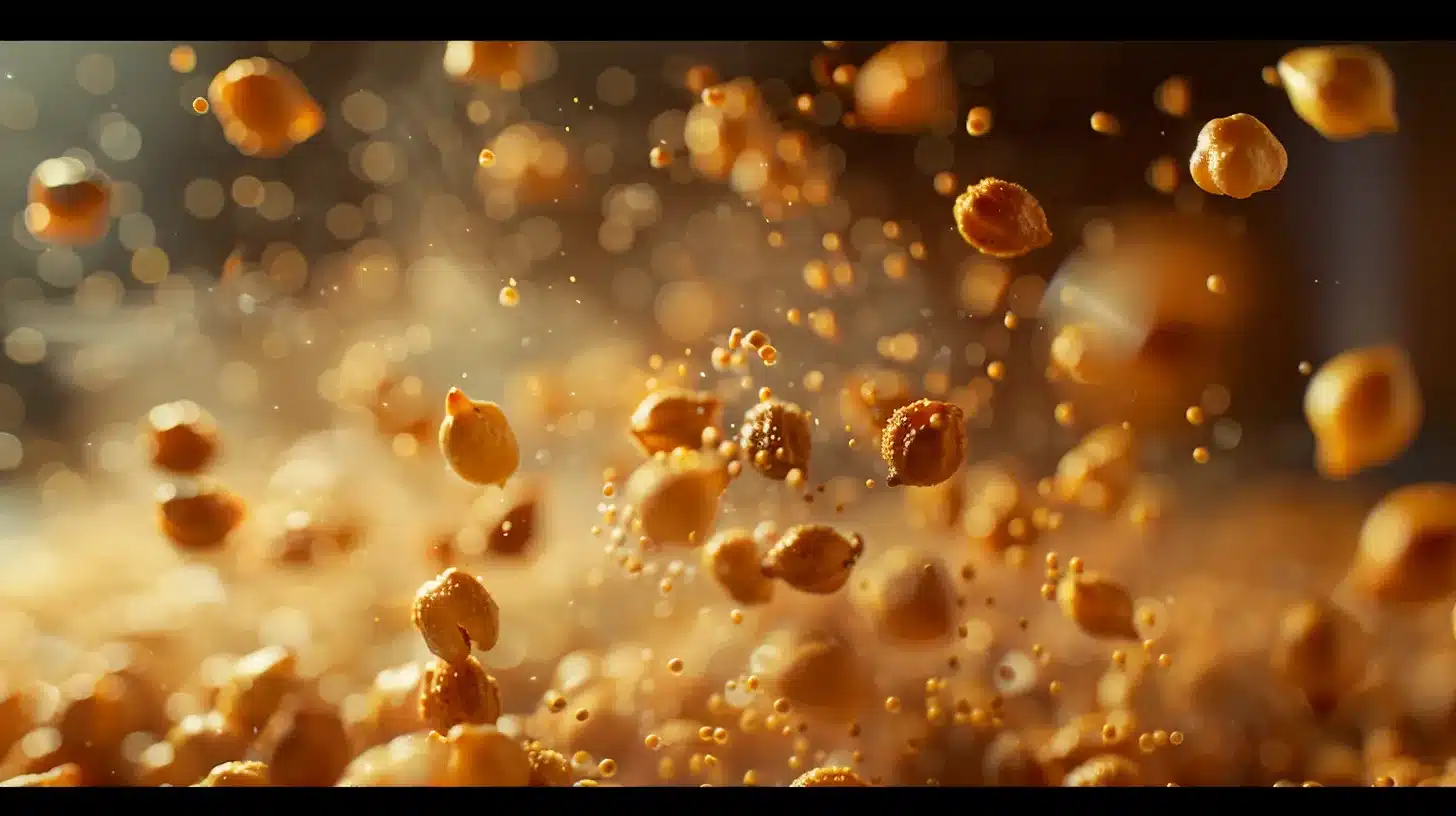
Roasted chickpeas serve as a compact food source brimming with crunchiness for the health-conscious office worker. Infused with flax seeds and carrot shavings, these small yet mighty legumes provide a dense source of nutrients that are essential for a busy day. Keeping a jar at your desk ensures that satisfying protein and fiber are within arm’s reach whenever hunger strikes, supporting both energy levels and dietary balance.
This nutrient-packed snack is not only delicious but also versatile, easily adapting to incorporate various seasonings and complementing dried fruit for a flavor-rich experience. They offer the convenience of quick access to nourishing food that maintains the body’s vitality. For those mindful of their snack choices, roasted chickpeas stand as a delightful alternative to processed snacks, aligning perfectly with a lifestyle that values health and efficiency.
Keep a Jar of Nut Butter and Whole Grain Crackers

Keeping a jar of nut butter and a box of whole grain crackers at your desk stands as a smart strategy for sustained energy and satiety. Rich in healthful fats, nut butters like almond or cashew provide a heart-healthy boost, paired effectively with the fiber of whole grain crackers for a digestible, slow-release carbohydrate source. This duo aids in balancing blood sugar levels throughout the day, forestalling the afternoon energy dip while supporting hydration by encouraging water intake.
For those attentive to their nutritional intake, this snack combination offers a practical solution. Crunchy crackers complement the creamy texture of nut butter, delivering satisfaction with each bite. They are also convenient for pairing with low-calorie snacks like celery to increase volume and nutrition, without adding significant fat or calories, making them an all-around win for health-focused individuals managing a busy workload.
Have Dried Seaweed Packs for a Salty Fix
For those craving a salty fix without the calorie-laden guilt of potato chips, dried seaweed packs are an ingenious solution. Loaded with flavor, these savory snacks can offer the same satisfaction one might find in a seaweed-wrapped sushi bite. Perfect for stashing in a desk drawer, they provide a quick and healthful way to quell afternoon cravings, with the added benefit of being rich in minerals like iodine and magnesium.
Dried seaweed is not only a stand-alone snack but also versatile enough to be paired with other nutritious options such as mustard for a bit of zing, a dollop of honey for sweetness, or a side of dried fruit for a chewy contrast. This low-calorie food makes for a simple, heart-healthy choice that supports the energy levels needed to power through workloads, all the while contributing to a balanced diet much like a well-crafted parfait.
Stock Up on Unsweetened Applesauce Cups

Keeping unsweetened applesauce cups at your desk is a wise choice for those looking to integrate healthier eating choices into their diet, without the need for significant prep or refrigerator storage. These single-serving cups are perfect for a quick breakfast addition or a mid-day snack, offering a naturally sweet flavor that satisfies cravings with no added sugars, supporting your skin‘s health with vitamins found in apples.
Unsweetened applesauce acts as a convenient and nutritious complement to an array of diet-conscious foods. Individuals can enjoy it alone or pair it with a serving of nuts or whole grain crackers to create a more balanced eating experience. Simple yet strategic, unsweetened applesauce cups serve as an easy-to-store snack that is both kind to your waistline and handy enough to grab during the busiest of days.
Keep Dark Chocolate Squares for Sweet Cravings
Stashing a few squares of dark chocolate at your workspace offers an indulgent remedy for sweet cravings without veering off the path of healthy eating. Dark chocolate, renowned for its antioxidants and the contentment it brings, acts as a quick and satisfying pick-me-up snack. Moreover, it supports heart health and presents a source of iron and vitamin C, often complementing the nutritional profile of a balanced office lunch that might include a tuna salad or cucumber slices.
Choosing dark chocolate over the usual cookie also aids in mindful snacking, offering an elegant treat that satiates the palate with less. Busy individuals can relish the richness of dark chocolate, granting themselves a moment of pleasure amidst their packed schedules without any complex preparation required. This thoughtful snack choice not only quenches sugar pangs but can also contribute essential minerals that bolster daily vigor and wellness.
Snacks for Post-Workout Recovery
Post-workout recovery is crucial for busy individuals looking to maintain their fitness while efficiently managing their health. Incorporating protein shakes with a variety of fruits supports muscle repair and offers an easy probiotic boost, while turkey and avocado roll-ups provide a satisfying low-cholesterol meat option. Cottage cheese paired with pineapple chunks is a sweet high-protein alternative, and edamame bowls sprinkled with sea salt make for a heart-healthy snack. Additionally, Greek yogurt with a drizzle of maple syrup and a handful of nuts combines both probiotics and natural sweetness for balanced nourishment. Each of these snacks is designed to replenish energy and aid in recovery, aligning with an active lifestyle.
Blend Protein Shakes With Fruits
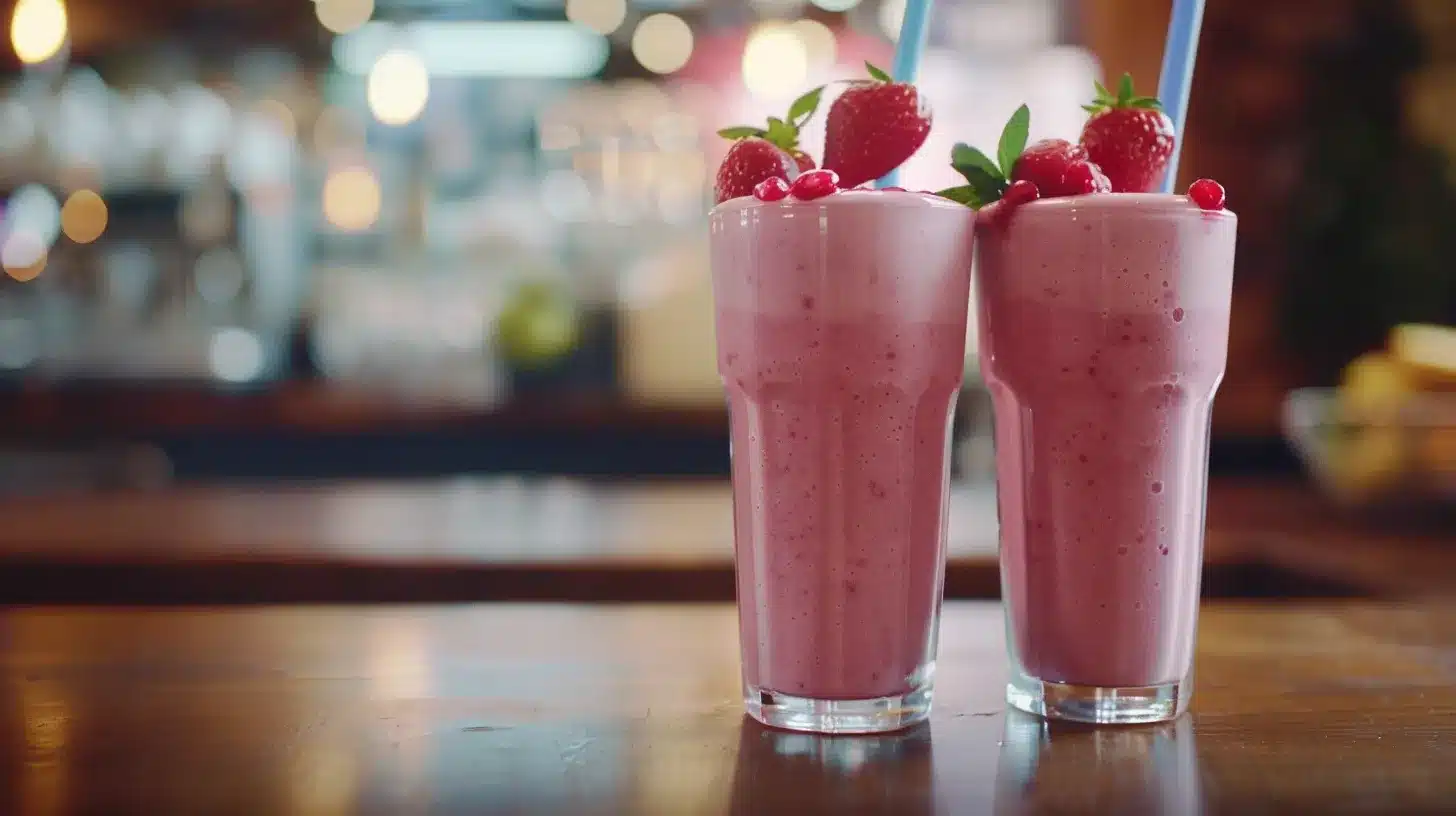
For active individuals, blending a protein shake with fruits is akin to crafting a beverage that mirrors the holistic nutrition of banana bread in a glass. By incorporating ripe bananas for natural sweetness, a scoop of raisin-studded protein powder for muscle recovery, and a dash of cinnamon for spice, one concocts a nutrient-filled drink that pays homage to the traditional flavors of a warm, fresh-baked muffin.
Post-exercise, the body craves replenishment, and a protein shake enriched with fruits delivers. Imagine a smoothie that combines the heartiness of banana bread with the richness of a chocolate muffin; melding together bananas, dark cocoa powder, and a hint of beef protein isolate can enhance nutritional intake while satisfying taste buds. This blend is a testament to a balanced dietary choice, seamlessly integrating the indulgence of favorite baked treats and the imperative muscle restoration after a workout.
Dark Chocolate squares for Craving
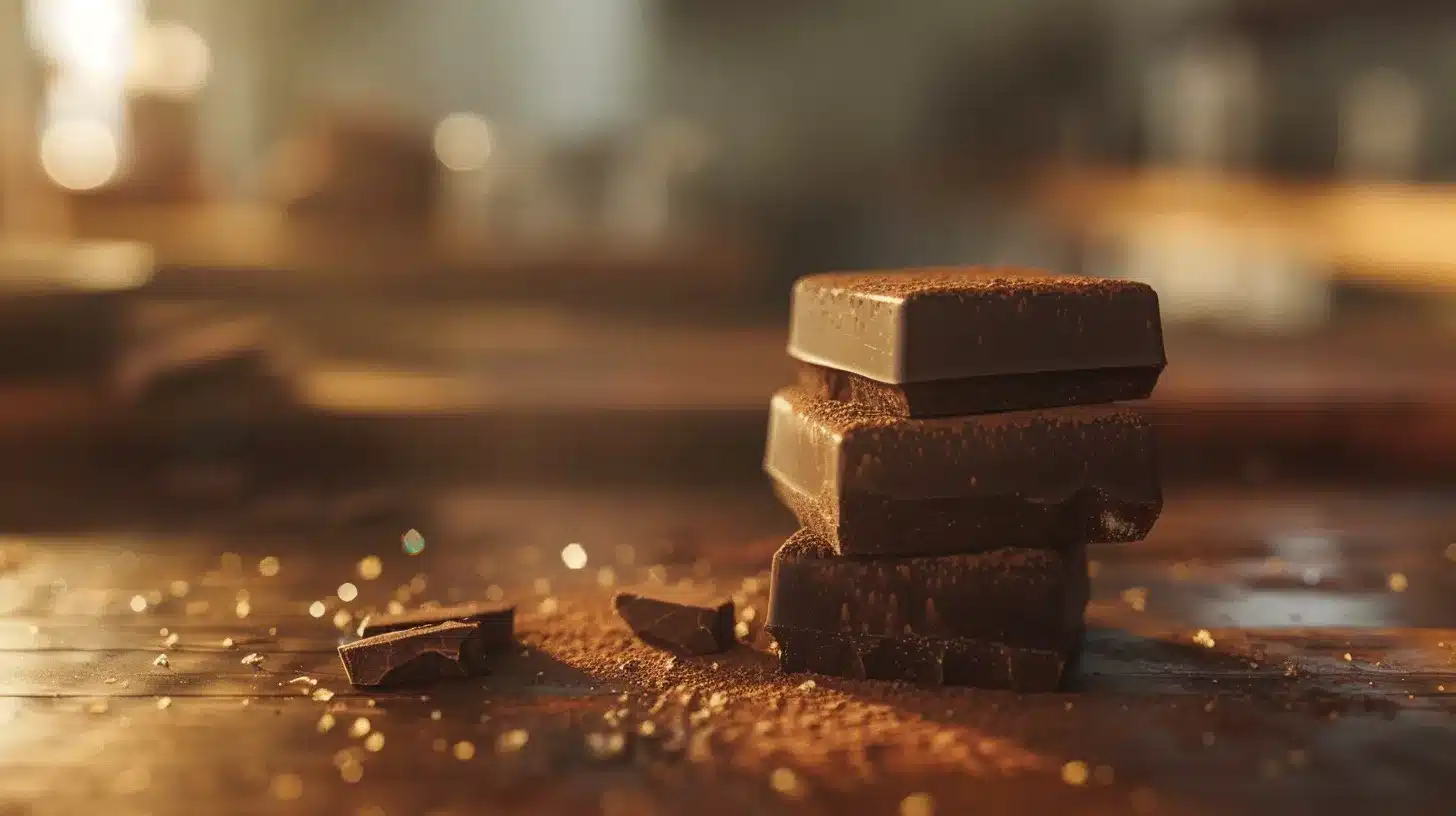
After a vigorous workout, the body needs nutrients to repair muscle and stabilize blood sugar levels, making Turkey and Avocado Roll-Ups an ideal choice. The lean protein in turkey supports muscle growth, while the healthy fats in avocado aid in recovery and boost metabolism. A spread of cream cheese provides additional protein and a touch of indulgence, transforming this into a satisfying, post-exercise snack.
For those with specific dietary needs, incorporating almond butter in place of cream cheese adds richness and vitamin E, essential for antioxidant protection, while opting for a gluten-free turkey variety ensures that the roll-ups cater to all health requirements. Simple yet nourishing, Turkey and Avocado Roll-Ups offer busy individuals a quick and tasty way to refuel their bodies and encourage recovery after physical activity.
Enjoy Cottage Cheese With Pineapple Chunks
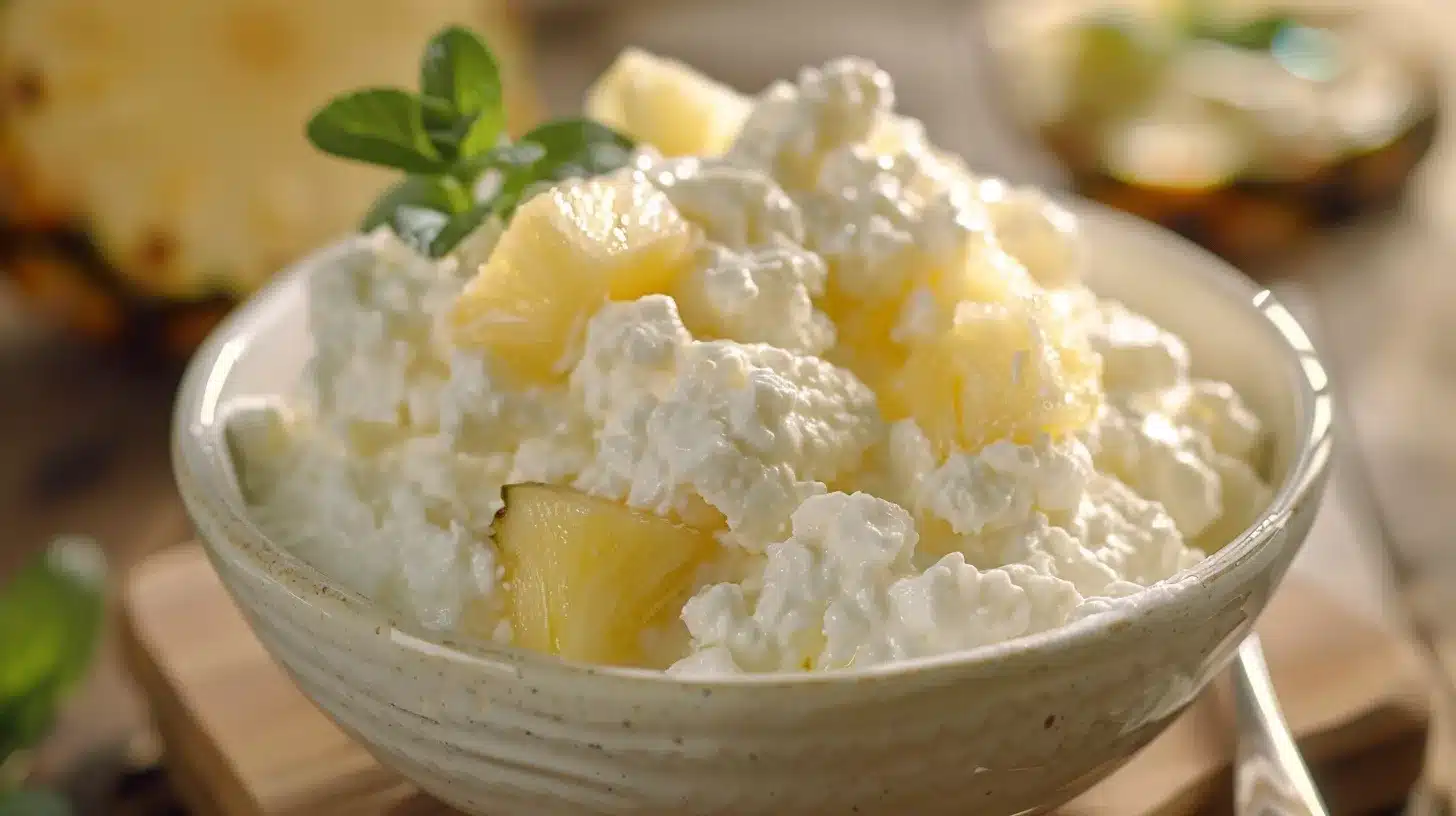
Combining the creamy texture of cottage cheese with the sweet tang of pineapple chunks creates a snack that transcends the typical post-workout smoothie. This pairing not only refreshes the palate after exercise but also delivers essential nutrients needed for recovery, including protein from the cheese and antioxidants from the fruit.
Busy individuals who might otherwise reach for pre-packaged items can quickly assemble this satisfying snack, offering a reprieve from their dinner prep routines. A scoop of cottage cheese sprinkled with a dusting of whey powder and coupled with fresh pineapple provides an ideal blend of rapid-absorption protein and natural sugars, essential for muscle repair and replenishment of glycogen stores.
Make Edamame Bowls With a Sprinkle of Sea Salt

Edamame bowls sprinkled with a touch of sea salt make for a perfect post-workout snack that curbs hunger while delivering a vital nutrient boost. Packed with protein and fiber, these green soybeans help rebuild muscle tissue and replenish energy levels efficiently. Additionally, the vibrant, slightly salty taste of edamame offers a satisfying alternative to the usual pancake or boiled egg, ensuring that your recovery meal is as delightful as it is beneficial for your health.
Busy fitness enthusiasts might appreciate the edamame bowl‘s convenience and the easy addition of blueberries for an antioxidant-filled snack. This combination not only meets the body’s requirements for vitamin intake but also balances savory with sweet, creating a diverse flavor profile that caters to post-exercise cravings. For those in a rush, the simple preparation helps maintain a nutritious diet, supporting both the body’s recovery process and an active lifestyle.
Have Greek Yogurt With Honey and Nuts
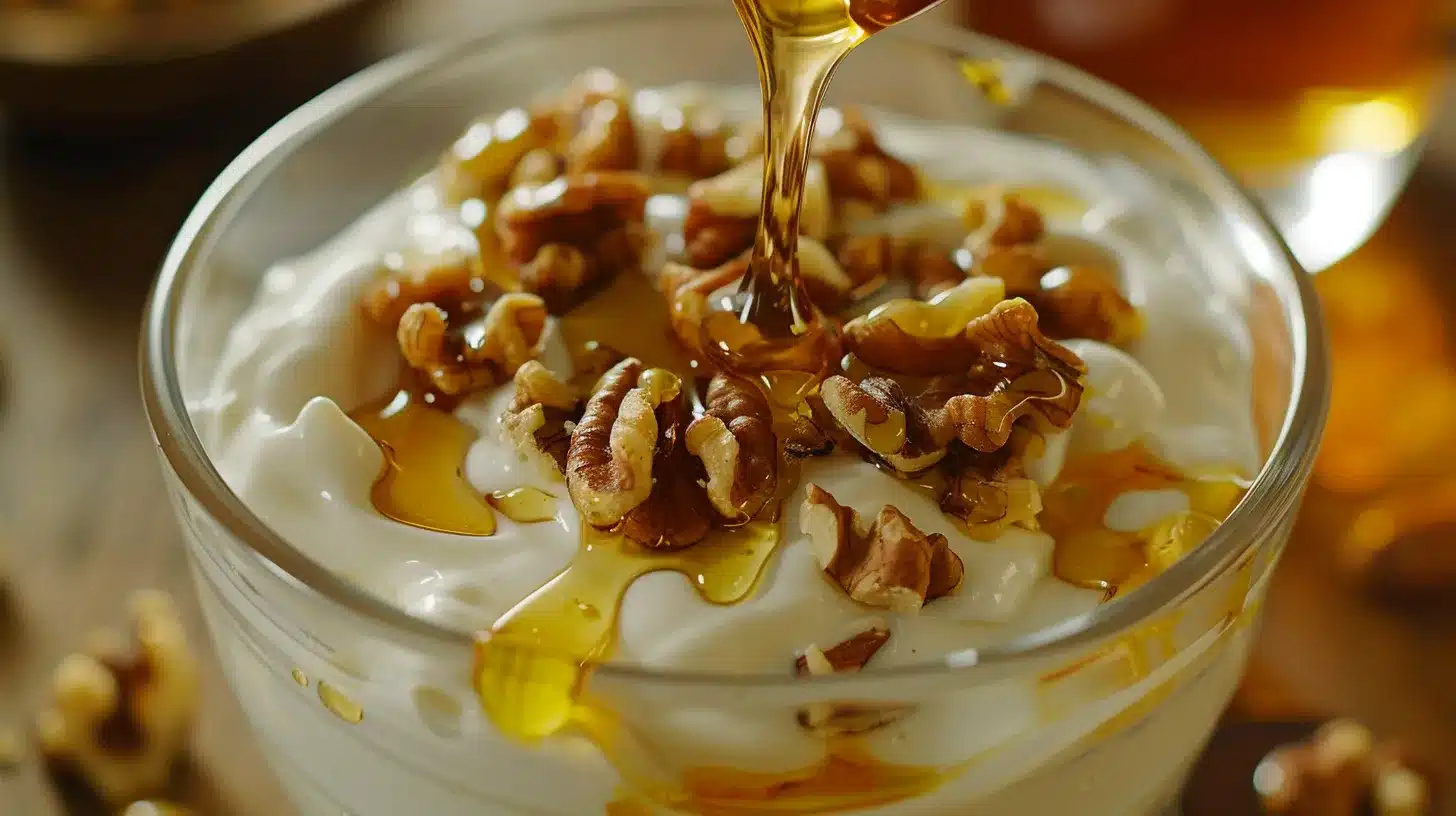
Having Greek yogurt with honey and nuts as a post-workout recovery meal is an effective way to replenish tired muscles and support bone health. The creamy yogurt offers a high-protein base, while honey provides a burst of natural sweetness that can re-energize the body’s depleted glycogen stores. Topping this blend with nuts adds not only a satisfying crunch but also essential fatty acids, contributing to a well-rounded nutritional profile.
For those in need of a quick and portable option, layering Greek yogurt, honey, and a mix of nuts into a mason jar creates an easily transportable snack. This compact meal sidesteps the need for preparation or cutlery, giving busy individuals a convenient way to guarantee their body receives the nutrients it needs. Additionally, pairing this yogurt-based mix with high-protein snacks like jerky can further enhance post-exercise recovery, striking the right balance between convenience and nourishment.
Time-Saving Snack Recipes for Families
For families constantly navigating busy schedules, healthy snacking can sometimes fall by the wayside, with empty calories creeping into meal plans. Dive into family-friendly snacking with our time-saving recipes that appeal to children and parents alike. Learn to craft Ants on a Log with your kids, adding a playful twist to snack time. Involve the little ones in making vibrant Fruit Kebabs with a luscious Yogurt Dip, perfect for encouraging fruit consumption. Baking becomes a breeze with Whole Grain Mini Pizzas, versatile enough to include any tomato-based mixture of your choice. For a simple treat, a food processor isn’t necessary to whip up Homemade Popcorn with an array of spices. Lastly, Assemble DIY Snack Packs to keep hunger at bay on busy days, ensuring nutritious options are always within reach.
Create Ants on a Log With Kids
Engaging children in preparing healthy snacks like Ants on a Log not only promotes healthy eating but also offers a fun activity to share. One can spread a layer of oatmeal-infused peanut butter on crunchy celery sticks, a fibrous choice promoting digestive health. To mimic the ‘ants’, families can use pomegranate seeds, an antioxidant-rich alternative to candy, offering both nutritional benefits and a burst of color that captures kids’ imaginations.
This snack preparation is an ideal opportunity to educate youngsters about nutritious choices while harnessing creativity in the kitchen. Families can replace traditionally sugary toppings with diced peach, providing a natural sweetness and vitamin-rich garnish. These playful, wholesome snacks align with busy lifestyles, as they are quick to assemble and perfect for on-the-go nourishment, ensuring that both the little ones and adults enjoy a healthy, satisfying treat.
Make Fruit Kebabs With Yogurt Dip
Fruit kebabs with yogurt dip are a smart choice for families in need of quick and healthful snacks. Skewering chunks of vitamin-D-rich fruits such as oranges and pairing them with a creamy Greek yogurt dip encourages healthy eating in a fun, interactive way. To add depth to the yogurt, blend in a spoonful of homemade fruit salsa, creating a snack that’s rich in nutrients and appealing to children and adults alike.
For a creative morning refreshment or an after-school filler, consider nestling small scoops of guacamole among the fruit pieces for a surprising twist. Should time permit, whip up a batch of homemade yogurt dip sweetened with mashed potato for natural creaminess, or mix in rolled oats for added texture. These fruit kebabs with their multifaceted dips offer a versatile snacking experience that packs nourishment without slowing down a family’s daily momentum.
Bake Whole Grain Mini Pizzas
Whole grain mini pizzas emerge as a go-to for families striving to maintain a healthy diet amidst a bustling schedule. The robust combination of magnesium-rich whole wheat crust, protein-packed chickpea toppings, and a light drizzle of olive oil offers a guilt-free reimagining of this classic favorite. These mini pizzas not only captivate the taste buds with their hearty flavors but also provide a convenient option for a meal that can be enjoyed together or on the go.
Baking these nourishing pizzas at home allows for personalized nutrition and taste preferences. By choosing toppings like grilled vegetables and lean meats, families can create a balanced meal rich in essential nutrients. The flexibility to prepare these in advance further underscores their practical nature, granting busy parents the ability to offer wholesome, oil-based snacks that align with the dynamic rhythm of family life.
Prepare Homemade Popcorn With Spices
Preparing homemade popcorn with spices presents a time-saving snack that is both fiber-rich and family-friendly. By popping a simple bowl of quinoa-infused popcorn and seasoning it with a homemade mix of chili powder, a hint of syrup, and crushed pretzel pieces, families can create a unique and satisfying treat. This quick and easy recipe offers a healthier alternative to store-bought popcorn, laden with essential nutrients and devoid of unnecessary additives.
The harmonious blend of sweet and spicy achieved by incorporating syrup and chili powder not only caters to various palates but also elevates the humble bowl of popcorn into a gourmet experience. The addition of quinoa boosts the protein content, making this homemade snack a wise choice for busy families looking to fuel their bodies efficiently without compromising on taste or health.
Assemble DIY Snack Packs for Busy Days
For families juggling work, school runs, and extracurricular activities, DIY snack packs are a nutritious lifesaver. When designing these packs, parents should consider including a nutrition facts label for homemade items, ensuring family members are aware of the calorie content and health benefits. Adding a sprinkle of nutritional yeast to popcorn or a savory bean dip can transform a simple apple into a protein-rich, vitamin-packed snack that satisfies hunger and nourishment needs simultaneously.
Assembling these snack packs doesn’t require extensive cooking, making it a practical option for busy mornings. By prioritizing ingredients like low-sodium bean dip and slices of crisp apple, families can create convenient, heart-healthy options that appeal to both children and adults. Such preparations ensure that even on the busiest days, families have access to quick snacks that are not only delicious but also support their overall wellness and energize their active lifestyle.
Conclusion
Efficient healthy snack recipes cater to the demanding pace of modern life, offering nourishment and taste without sacrificing convenience. They empower busy individuals to maintain balanced diets and energy levels through thoughtfully crafted, nutrient-dense options that suit various times of the day and specific dietary needs. By integrating these smart snacking solutions into their routines, families and professionals alike can uphold their health goals and optimize their daily performance. Ultimately, these snack recipes act as a cornerstone for sustained wellness, seamlessly fitting into hectic schedules while enriching the overall quality of life.

